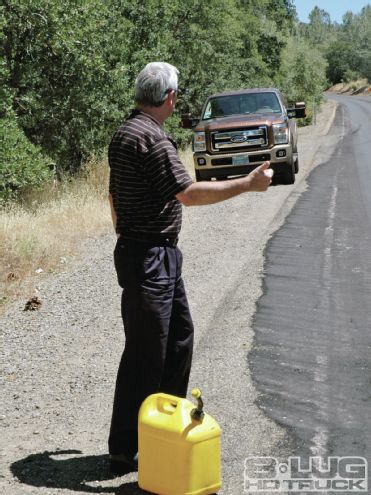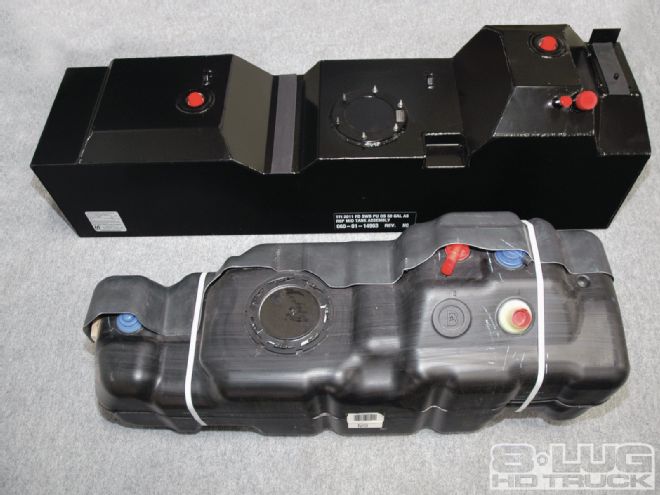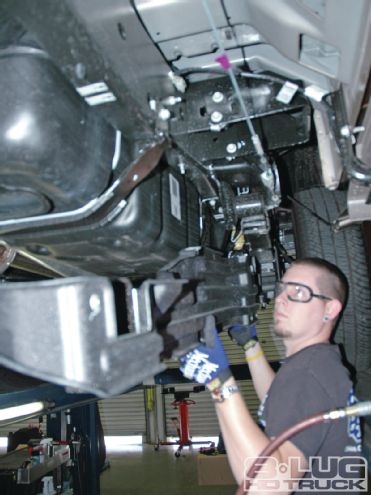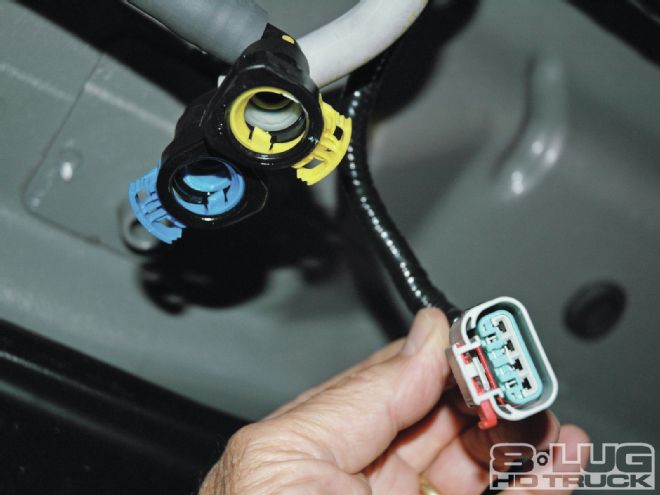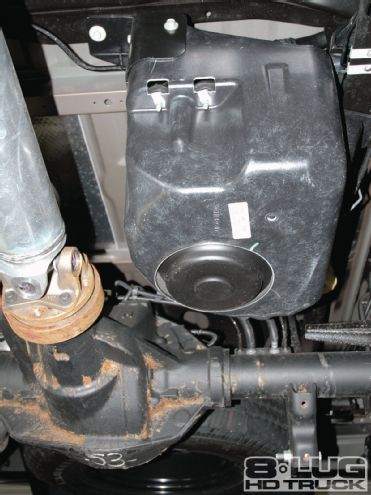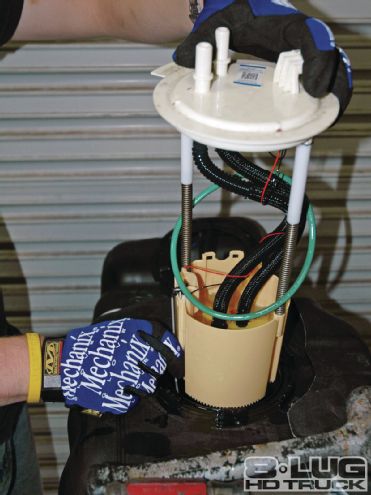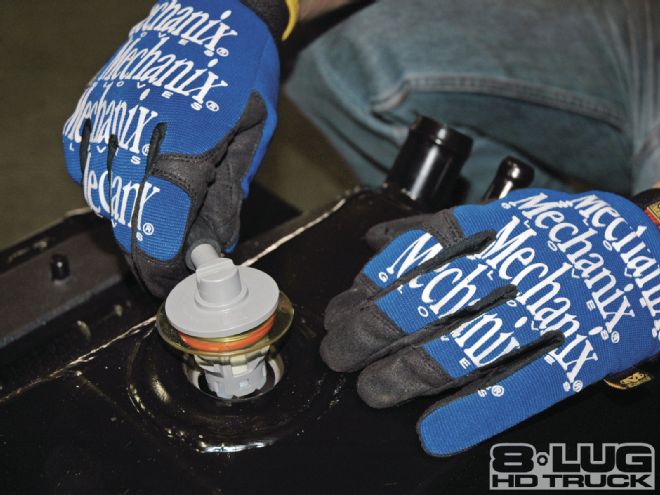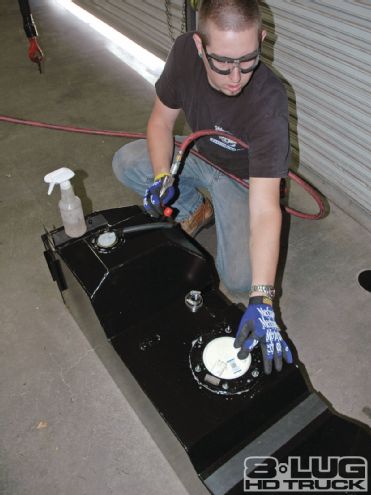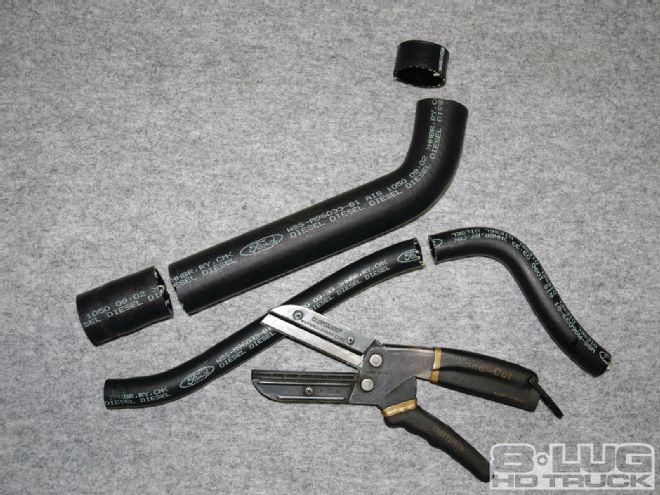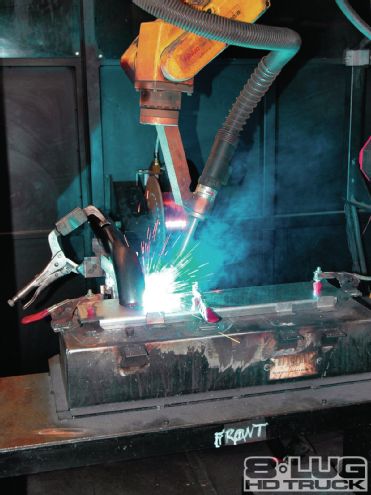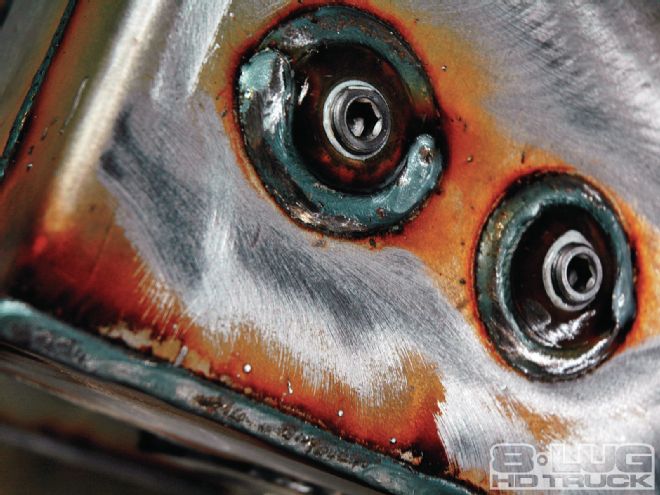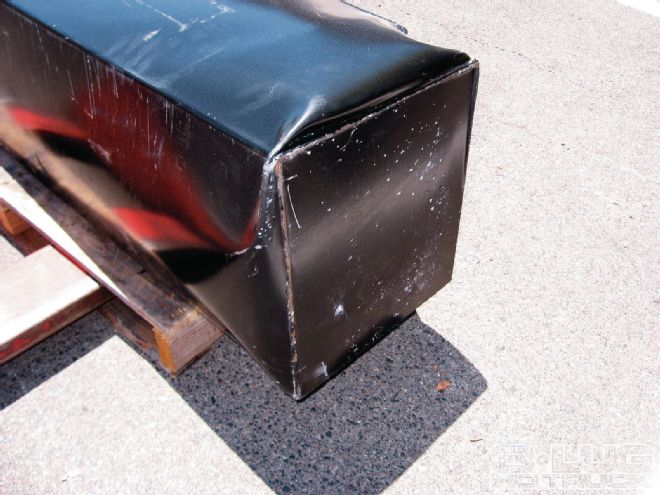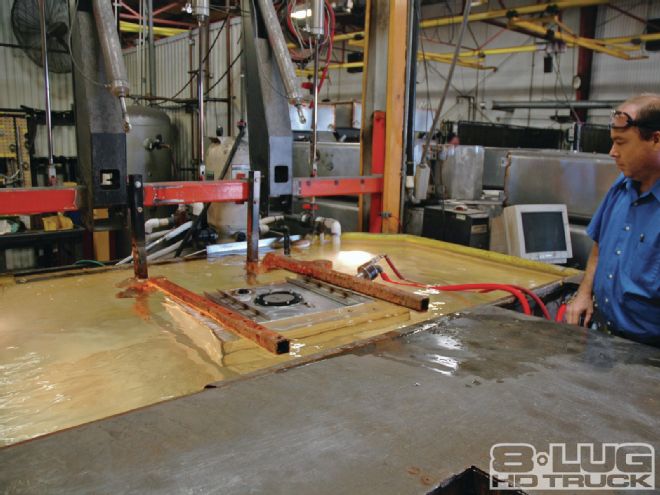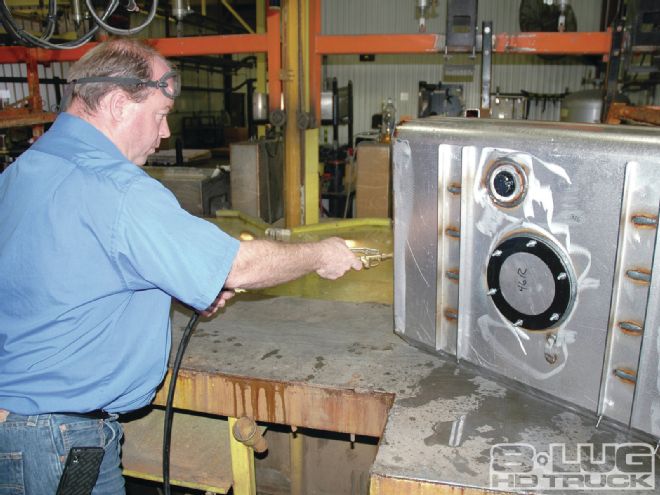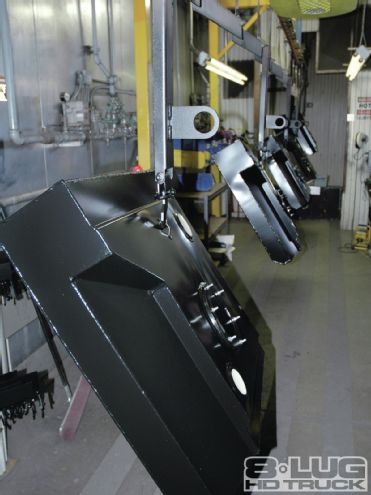It’s pretty obvious why you own an eight-lug heavy-duty truck, and it’s probably not just to run errands around town. More likely, it’s your work vehicle or recreation tow truck. In any case, whether you’re pulling the boat to the lake or hauling your fifth-wheel to the mountains, there is a reason you have a fullsize truck.
You may also be in the habit of filling up the tank and not thinking about it again until you get home. Those days may be over if you’re driving a new ’11 Ford diesel shortbed 2x4 or 4x4 crew cab. Why’s that?
Thanks to the addition of the diesel emission fluid tank (DEF) just in front of the rear axle, the molded plastic factory fuel tank has been reduced to a petite 26 gallons. Some SUVs carry more. If you drive extremely carefully, you might get 20 to 25 mpg. That’s great—if that’s what you bought an F-350 4x4 crew cab for. But back to real life. Around town, on 50-to-60-mph roads, you can realistically expect 18 mpg. If you’re pulling a big 10,000- to 20,000-pound fifth-wheel toy hauler, you may be getting an optimistic 9 mpg. Plus, you’ll be lucky to reach your destination without stopping at least once before that ubiquitous Low Fuel light stares you in the face.
It’s a simple problem. There’s only so much room under the ’11 Ford F-350. Leave it to Transfer Flow—one of the largest designers and manufacturers of aftermarket and OEM fuel tanks—to get the most out of the space available. The company has just introduced a 50-gallon replacement fuel system. We took the opportunity to watch the installation of one of the first tanks off the assembly line.
The shiny new King Ranch Super Duty Lariat F-350 6.7L Power Stroke was already on the rack at Transfer Flow’s modern installation facilities in Chico, California, when we arrived. Eric Harper walked us through the procedure. He first removed the rock shields (apparently a factory option on some models) on the outside and bottom of the factory’s plastic tank. These are no longer needed because Transfer Flow uses 12-gauge aluminized steel (0.105-inch thick). Clamps on the fill and vent hoses were loosened and pulled down. The tank was securely supported with a hydraulic jack, and the OEM tank mounting straps were removed. The truck was then lowered about 6 inches—just enough for Eric to reach up on top to disconnect the supply and return hoses and the wiring plug from the OEM sending unit. Since you can’t see on top of the tank, step-by-step instructions with photos are included in the detailed installation manual.

| Clamps on the fill and vent hoses were loosened and pulled down.
The DEF tank is a totally independent unit. It is not moved or altered. The DEF process allows the new 6.7L Power Stroke to run leaner at its optimum range in terms of fuel mixture. As the exhaust enters the diesel oxidation catalyst (DOC), oxidized hydrocarbons are turned into carbon dioxide and water. The DOC also increases the exhaust temperature before it flows into the selective catalytic reduction chamber (SCR). Here the NOx in the exhaust stream is converted into water and inert nitrogen. A separate line runs from the DEF reservoir to the SCR where it atomizes DEF (an aqueous solution of 67.5 percent water and 32.4 percent pure urea) into the hot exhaust to reduce nitrous oxide by as much as 80 percent. Finally, the diesel particulate filter (DPF) traps any remaining soot, which is periodically burned away in the regeneration process (at temperatures in excess of 1,100 degrees). A considerable improvement in economy is a welcome side effect of this complicated process, but there’s still no free ride.

| With the supply and return hoses and the wiring plug from the OEM sending unit disconnected, the tank was removed.
With the factory unit on the ground, the fuel sender was removed and a new float arm was attached to give a more accurate calibration due to the shape of the new tank. New rollover valves were fitted, and the OEM hoses were slightly modified, allowing them to be reused. Exact measurements of how much to cut are in the instructions. Eric used soapy water and compressed air to double-check the new seal on the sending unit.

| The factory fuel sending unit has a supply line, a return line, and an electrical plug.
Installing the Transfer Flow tank is straightforward. It weighs about 134 pounds, so a proper jack is necessary. Many of the factory bolts and bolt clips are reused for the new mounting straps. No drilling is needed. A single bracket is needed on the outside rear, which is attached to the frame using the existing emergency brake clamp bolt and a factory bolt and clip.

| The new Transfer Flow tank weighs about 134 pounds, so a proper jack is necessary.
Being careful not to crimp anything, the fill, vent, supply, and return hoses were connected and the clamps were tightened. The tank was then raised into position and new mounting straps were installed. Looking at it up on the rack, this is a big tank—with nearly twice the OEM’s capacity. We wondered if there would be a clearance problem. The OEM tank shield is about 14.5 inches from the ground, and the Transfer Flow tank is 14.75 inches. During normal backroad driving, the differential or transfer case will probably hit first. When cresting a sharp ridge with a long-wheelbase truck, you always need to watch your center pivot point to avoid high-centering.

| Being careful not to crimp anything, the tank was raised high enough to reconnect all hoses and the sending unit plug. The new mounting straps were installed using OEM bolts and bolt clips. No drilling is necessary.
During our visit, we took a tour of the impressive Transfer Flow factory. Nearly everything—including the electrical harnesses—is made in-house. Tank components and finished products are engineered, bent, formed, and welded. Robots do much of the welding. Transfer Flow aluminum auxiliary tanks and combination toolboxes are all hand-welded. All units must go through a pressurized leak test, fully submerged in a water bath before they are washed, dried, and powdercoated. New designs, like this 50-gallon replacement system, must go through rigorous testing, including being dropped (full of water) from a 35-foot tower onto a steel plate on a reinforced concrete platform. If it leaks, it goes back to engineering.

| 2011 Ford F350 Replacement Fuel Tank reconnecting Without Drilling
The 50-gallon replacement fuel system has an MSRP of $799.50. Installation at the Transfer Flow factory in Chico, California, is $200. Transfer Flow fuel systems are covered by a three-year or 60,000-mile limited warranty. The company has a network of dealers nationwide who can install and service its products.
This replacement tank nearly doubles your comfortable range on long trips, allowing you to stop at your preferred travel centers. It may even save you a walk alongside a lonely road carrying an empty can or a wait for a roadside assistance service truck.

| The 50-gallon replacement tank maximizes the space available between the frame and the driveshaft. The new tank does hang a bit lower, but it should not be a problem for normal backroad driving conditions.
